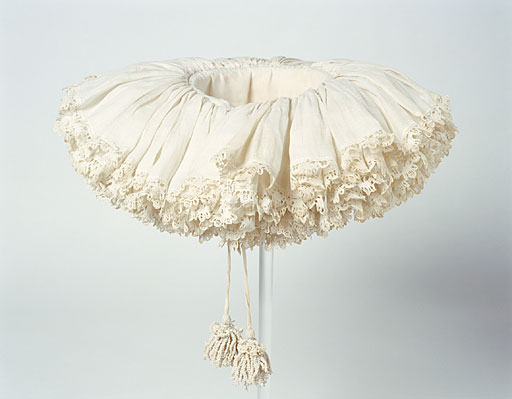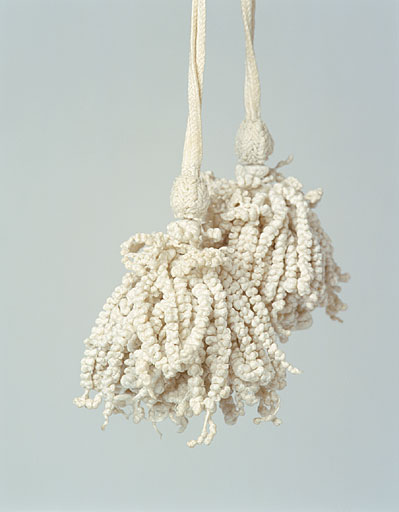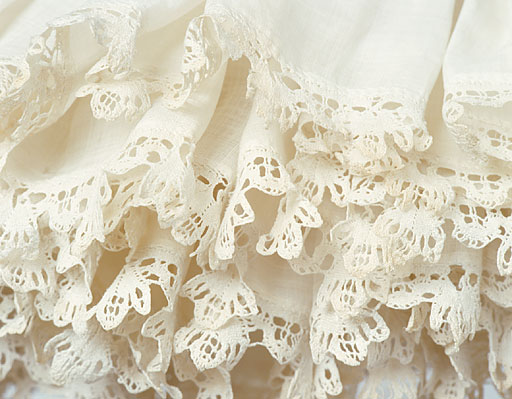collar & ruff
Summary
Linen ruff-collar with bobbin lace. Double-thickness linen neckband, with four falling bands of finer linen, several original darns, finely gathered into one edge of band, each layer edged with 1.5cm band of bobbin lace; flat plaited linen cord looped through hole at edge of each band, with 2 tassels of multiple knotted strands and knitted fringe. Sewn to mount (for storage and display)
Display Label
Intricate and complex tassels were used in the seventeenth century to decorate the ends of ties at the necks of a number of items of linen, including shirts, shifts, hoods and in this case, collars. They can also be found on bags and purses with drawstring openings, and as decoration on needlework-tool cases or pincuchions. Contemporary portraits can show remarkably similar tassels to those on surviving garments, often painted to show the most involved and complicated detailing. This pair of minutely knotted and twisted tassels are used to trim the ends of a pair of ties on a man's linen collar or ruff of the 1620s which is part of the Filmer Collection. This ruff itself has four separate flounces or falling bands in a finer linen than the neck piece, edged in narrow bobbin lace, and it would have been worn falling over the neck of an embroidered doublet, as seen below in the two portraits of men from about 1630.
Object Name
collar & ruff
Date Created
1620-1640
Dimensions
diameter (tassel bead): 0.6cm
Width (neck band): 10cm
Width (falling bands): 11cm
Length (strings): 18.5cm
Circumference (falling bands): 290cm
Length (tassel): 3.5cm
Circumference (neck band): 39cm
accession number
2003.86
Place of creation
United Kingdom
Medium
Credit
Accepted by HM Government in lieu of inheritance tax and allocated to Manchester Art Gallery, 2002.
Legal
© Manchester Art Gallery



